How To Clean the Worst Water Stains From Toilet By Baking Soda, Vinegar, Borax
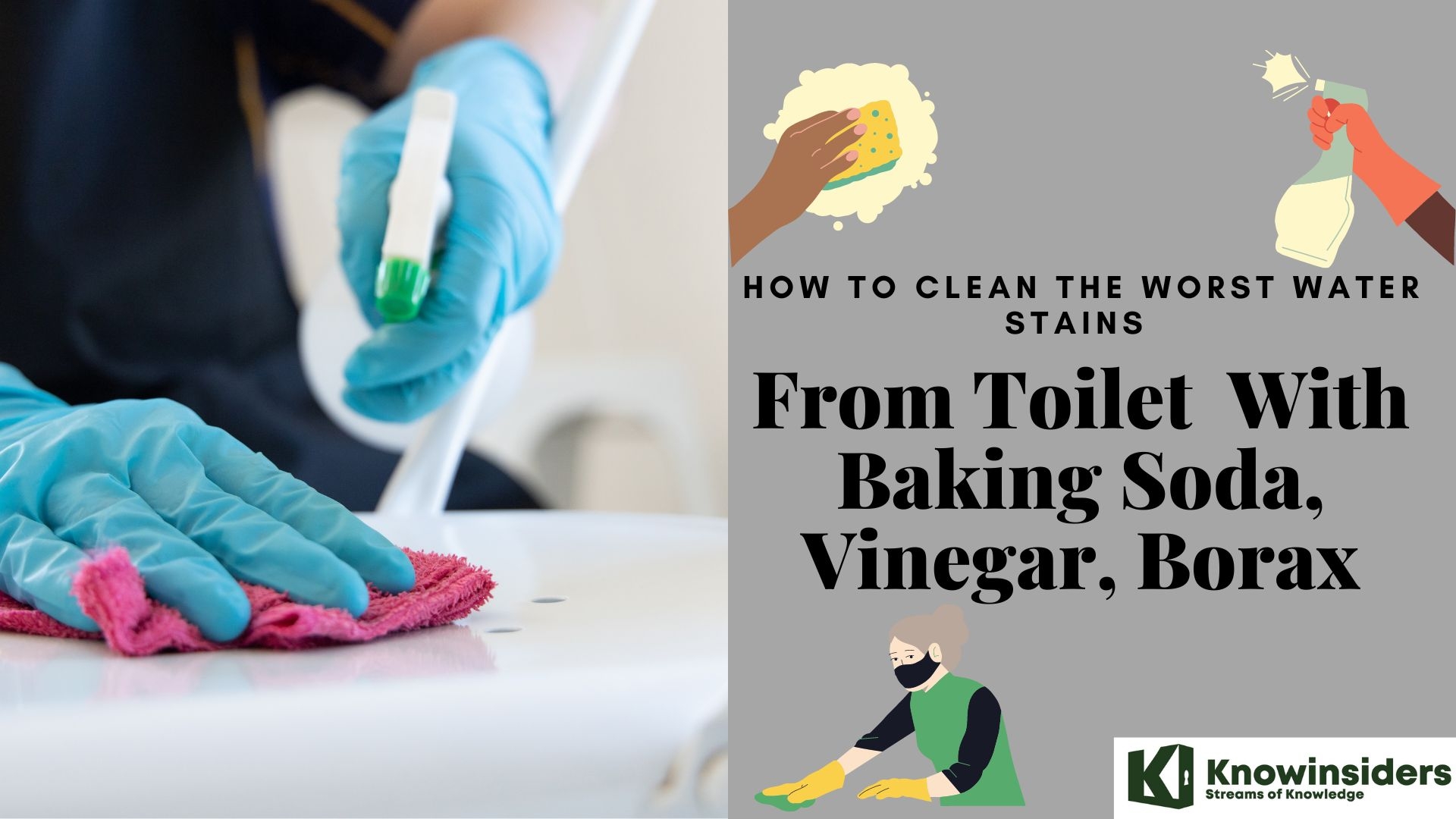 |
| How To Clean the Worst Water Stains From Toilet By Baking Soda, Vinegar, Borax And Others Knowinsiders.com |
| Table Of Content |
If you were only away for a short period of time, your usual cleaner and a quick swirl of your toilet brush should take care of any new stains. But stains that have been there for several weeks (or months, or years) will be far more stubborn.
Take a look at these best ways and simple guide to clean the hard water stains from your toilet using different methods.
What is the Hard Water and What Causes?
The term “hard water” refers to water with high mineral content, such as calcium, magnesium carbonate, or sulfate. This type of water is formed when water passes through deposits containing chalk, limestone, or gypsum.
Hard water doesn’t have any adverse effects on one’s health; rather, the minerals it contains have numerous health benefits. Cleaning one’s skin by removing dirt and grime is the most prominent advantage of drinking hard water. It also prevents acne since the sulfur contained in it can improve the reparative processes of the skin.
The calcium and magnesium found in hard water help protect the body from cancer, relieve constipation, and protect the cardiovascular system. Some people believe that drinking hard water can improve your skin and hair. However, there are no scientific studies to back up this belief.
What Causes Hard Water Stains on Toilet Bowl?
Water is an essential part of our everyday lives, but it can also be a nuisance when it leaves hard water stains on our faucets, dishes, and clothes. So, what causes these unsightly marks?
The answer lies in the mineral content of the water. Hard water contains high levels of minerals such as calcium and magnesium. When these minerals come into contact with soap or detergent, they form a sticky film that can leave behind unsightly stains.
Another factor that contributes to hard water stains is the pH level of the water. If the pH level is too high or too low, it can aggravate the problem and make it harder to remove the stains. A good way to determine the pH level of your water is by using a food-grade pH test kit. The pH scale should read “about 8.5”. If the water is too high, then you can use a filtration system to reduce the hard water levels.
Effects of Hard Water Stains on Toilet Bowl
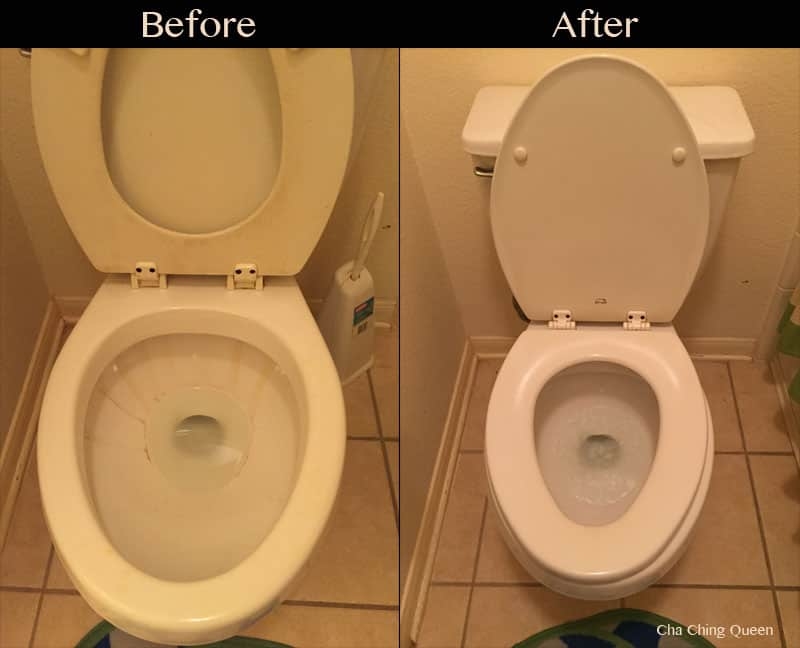 |
| Photo: Cha Ching Queen |
When water evaporates, the minerals that are left behind can create unsightly hard water stains on your toilet bowl. Not only are these stains unattractive, but they can also be difficult to remove. In this article, we will discuss the effects of hard water stains on toilet bowls and provide some tips for removing them.
Hard water stains can change the color of your toilet bowl. When hard water stains build up over time in your toilet bowl, they form yellowish or brownish spots, which change the natural color of the toilet bowl, thus making it unattractive and difficult to remove. If you notice any of these changes in your toilet bowl, it is important to treat the stains immediately.
In addition to being unsightly, hard water stains can also be a breeding ground for bacteria. If they are not cleaned regularly, they can cause odor problems and even increase the risk of getting sick. To prevent hard water stains from forming, it is important to clean the toilet bowl regularly using a mild detergent and a brush.
The Best Cleaning Tools For Toilet
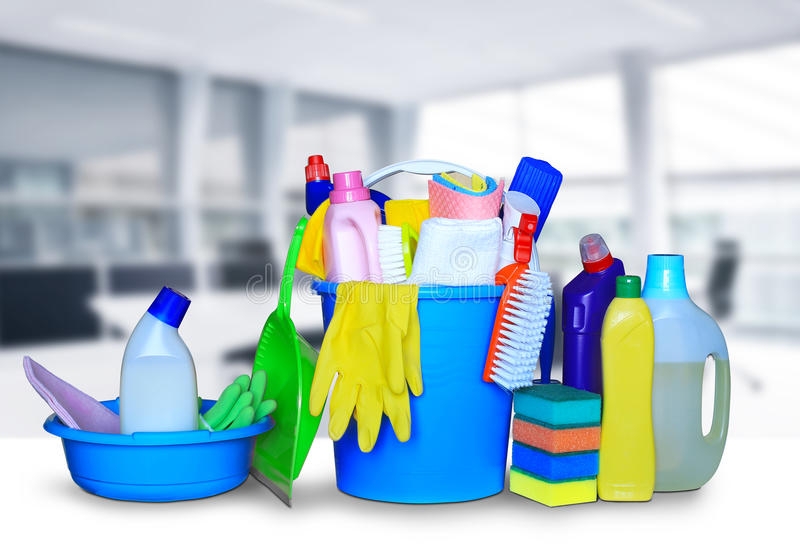 |
| Photo: Dreamstime |
1. Automatic or Drop-In Toilet Cleaners
Automatic or Drop-In Toilet cleaners usually consist of a disc of cleaner that you deposit into the toilet tank. Some other models suspend from the toilet tank or rim of the toilet. They automatically dispense a cleaning solution into the water when the toilet is flushed.
2. Powder Toilet Cleaners
Powder Toilet cleaners are designed to scrub a toilet without scratching it. These cleaners are a good choice when staining of the toilet bowl is an issue.
3. Toilet Brushes
Toilet brushes are bristle brushes that usually come with a storage container. Many companies market the toilet brushes to match bathroom decor.
4. Eye and Hand Protection
Even the most experienced toilet cleaner can occasionally splash water and or cleaner during a good scrubbing. Protect your eyes with goggles and your hands with gloves. This is one of the filthiest places in your home. You do not want the contents or the cleaner anywhere near your eyes and hands.
5. Disposable Toilet Cleaning Systems
Almost every cleaning product company has some form of a disposable toilet cleaning system on the market. These systems allow you to have disposable prefilled cleaning heads or automatic cleanser triggers that keep you from relying on a reusable brush and separate cleanser.
6. Paper Towels vs. Rags
Sometimes it seems as though the outside has become dirtier than the bowl. Using paper towels, rags, or sponges along with a spray cleaner will get the outside as gleaming as the bowl. Use rags if you prefer, but wash right away in hot water. Otherwise, go with paper towels, and never use sponges.
Using Vinegar And Baking Soda to Remove Hard Water Stains from the Toilet Bowl
Removing hard water stains from a toilet bowl can be a challenging task. However, there are some simple methods that can be used to help remove these unsightly marks. One of the easiest methods is to use vinegar. Vinegar is a natural cleaner and sanitizer that can help break down the build-up on the toilet bowl caused by hard water.
Baking soda is a good cleaning agent. Baking soda acts as a cleaning agent because it is a mild alkali and can cause dirt and grease to dissolve easily in water for effective removal. Because baking soda is a pure, natural product that is also a food, it is non-toxic, unlike many other household cleaners.
1.Pour in vinegar: Measure one cup of vinegar and pour it around the inside of the toilet bowl, making sure to cover the hard water stains with vinegar. Swish it around with a toilet brush and let it sit for a minute.
2.Add baking soda and more vinegar: After letting the vinegar sit, sprinkle a cup of baking soda around the toilet bowl and then add another cup of vinegar over the baking soda. The mixture should fizz. Let this sit for approximately 10 minutes.
3.Swish solution and let sit: Using a toilet brush, swish the solution around the toilet, making sure to cover any stains, and let the solution sit for up to 30 minutes. Stir the solution around the bowl a few times to make sure you get rid of the stains.
4.Scrub: After 30 minutes, if there are still stains, use the toilet brush to scrub them away.
5.Rinse and repeat: Flush the toilet to rinse, and repeat as necessary for stuck-on stains.
Tip: While you have the baking soda and vinegar out, use them to clean your bathroom sink with homemade drain cleaner.
How to Remove Hard Water Stains With Borax and Vinegar
Borax, also known as sodium borate or sodium tetraborate, is a naturally occurring mineral used as an ingredient in household cleaning products, as a buffer in chemical laboratories, to help extract gold in mining operations, and as a component of glass and ceramics.
Borax is primarily mined from evaporated lakes in California and Turkey and is incredibly popular due to its versatility in commercial and household applications.
With a pH of around 9.5 (putting it somewhere between baking soda and toothpaste on the pH scale), borax is slightly alkaline and forms a basic solution when added to water. This is one of the reasons why borax is often advertised as a “laundry booster” – adding borax to laundry wash water raises its pH (similar to washing soda, which has an even higher pH,) helping to break up stains and making it easier for your laundry detergent to do its job too!
Basic solutions can be really useful for both cleaning and laundry purposes because of the way they break down acidic, fatty, and oily substances—like the ones that lead to food stains and greasy messes!
1. Pour the Borax
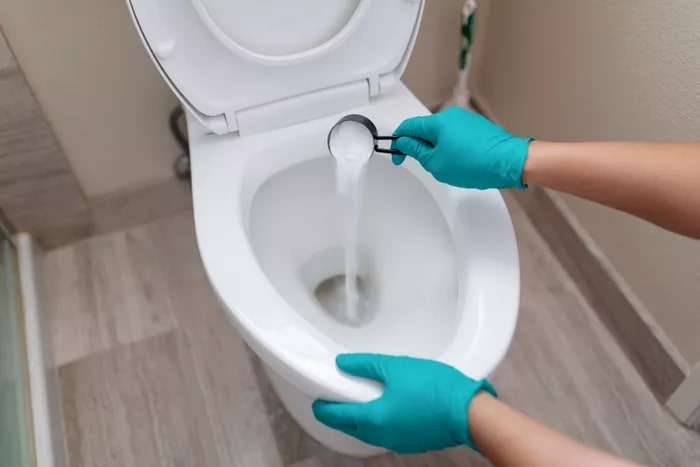 |
| Photo: The Spruce Pet |
Pour 1/4 cup of Borax into the toilet bowl and swish it around with a toilet brush.
2. Add the Vinegar
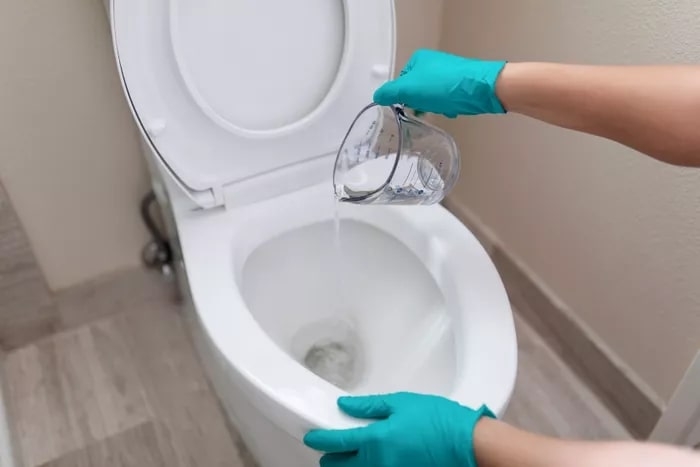 |
| Photo: The Spruce Pet |
Add 1 cup of vinegar and allow the mixture to sit in the bowl for about 20 minutes.
3. Scrub the Bowl
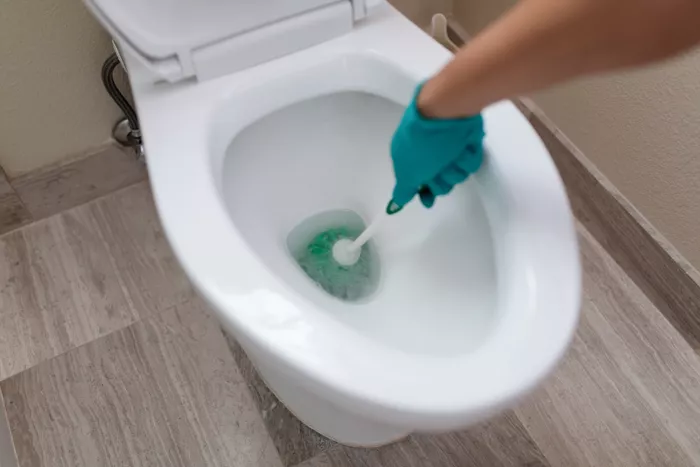 |
| Photo: The Spruce Pet |
Finish by scrubbing the bowl with a toilet brush to remove the stains. Flush the toilet to rinse.
Using Toilet Bowl Cleaners to Remove Hard Water Stains from the Toilet
If you have hard water stains on your toilet, don’t worry! You can easily remove them using toilet bowl cleaners. A toilet bowl cleaner is a great way to remove hard water stains from your toilet. It is important to read the instructions on the bottle carefully, as some cleaners can be harmful if used incorrectly. These cleaners are made specifically for hard water stains, and they are very effective at removing them.
To remove these stains, first of all, squirt some of the toilet bowl cleaners all around the circumference of the toilet bowl and allow it to sit for about 10 minutes. Next, scrub the stains with a brush until no stains remain. Repeat if necessary. Finally, flush the toilet to rinse the stains away.
Cleaning the toilet is usually everyone’s least favorite task when tidying up the bathroom. But finding the best toilet cleaner can not only make this daunting chore easier but something you may have to do less often. Options to get rid of those toilet rings seem endless with toilet bowl brushes, liquid cleaners, tablets, and automatic toilet cleaners in gels and tablets. If you want to spend less time scrubbing, it’s essential to get the right products for the job.
Best Overall Toilet Cleaner: Clorox Toilet Bowl Cleaner with Bleach
Best Tablet Toilet Cleaner: Scrubbing Bubbles Continuous Clean Drop-Ins
Best Clinging Liquid Toilet Cleaner: Lysol Power Toilet Bowl Cleaner
Best Toilet Cleaning Wand: Clorox Toilet Wand System
Best Toilet Cleaner for Stains: Scrubbing Bubbles Power Stain Destroyer
Best Automatic Toilet Cleaner: Lysol Click Gel
Best Toilet Cleaning Brush: Oxo Good Grips Toilet Brush
Best Toilet Cleaner for Rings: Clorox Toilet and Bath Stone
How to Remove Hard Water Stains With Borax Paste
In the case of a very resistant stain, a homemade borax paste may be effective. Applying the paste directly onto the stain, rather than filling the toilet bowl with a liquid mixture, is a more concentrated option for removing hard water stains.
1. Shut Off and Flush
 |
| Photo: The Spruce Pet |
Begin by shutting off the toilet's water valve, and then flush the toilet to drain the bowl. To apply the borax paste correctly, the toilet must be void of water.
2. Make the Paste
 |
| Photo: The Spruce Pet |
Once your toilet is empty, make the borax paste by mixing 1/2 cup of borax and 1/4 cup vinegar until thick. The borax solution will quickly harden, so don’t add the vinegar until you are ready to apply the paste.
3. Spread the Paste
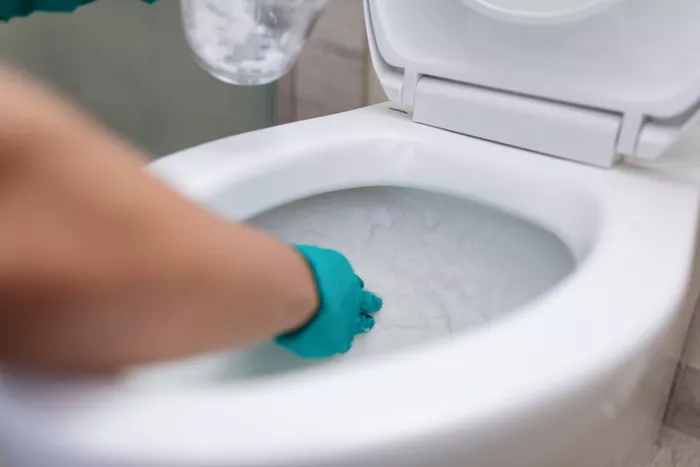 |
| Photo: The Spruce Pet |
Once you've made the paste, spread it directly onto the hard water stains in the toilet until they are covered completely.
4. Let It Sit
Allow the paste to sit on the stains for 15 to 20 minutes.
5. Remove the Paste
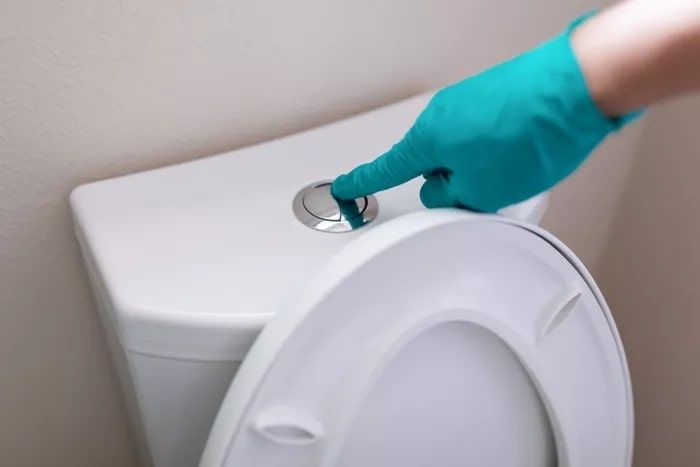 |
| Photo: The Spruce Pet |
After 15-20 minutes, remove the paste (and the stains underneath) by scrubbing with a stiff-bristled nylon brush. Flush the toilet to rinse.
How to Remove Hard Water Stains from Toilet With Steel Wool
You may also use 0000-grade steel wool to remove hard water stains from toilet. Steel wool can be used in conjunction with plain water as well as household cleaners and homemade mixtures. Be sure to use 0000-grade steel wool (the finest available version) to prevent scratches to the toilet's porcelain.
When it comes to cleaning up your home, it may seem like there are endless tools, ingredients, and techniques for getting the best clean. But, sometimes, it’s best to stick to a classic—something simple that gets the job done.
Enter: Steel wool. This abrasive tool can remove built-up-grime and rust stains thanks to its collection of fine, sharp steel fibers that can range in width depending on the job you’ll need it for. Coarse steel wool is great for heavy-duty work, while fine steel wool will gently scrub and avoid any scratches from happening to the surface you’re cleaning.
With this said, proceed with caution. Steel wool is very abrasive, and it can cause irreversible scratch damage, so you should avoid certain surfaces like plastic or stainless steel at all costs.
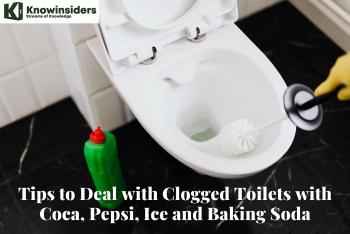 How to UnClog A Toilet With Coca, Pepsi, Ice and Baking Soda How to UnClog A Toilet With Coca, Pepsi, Ice and Baking Soda A clogged toilet makes life in the family upset. Quickly deal with it right away with the tips below! |
How to Remove Hard Water Stains With Citric Acid
If citric acid sounds familiar, it's probably because you've seen it on a label. You can't really miss it, as it's in everything from food items like wine and hummus to beauty products. What most people don't realize, though, is that it also makes for a super-versatile, all-natural cleaning ingredient for your healthy home.
Baking soda is often touted as the best cleaning ingredient. It's safe on a variety of surfaces, banishes odor, and even helps to keep the sparkle in your white sneakers. But citric acid is often overlooked when it comes to sprucing up your home. In powder form (like this highly-rated option from Amazon), "citric acid helps break down any gunk, grime, and build-up," says Melissa Maker, founder of Clean My Space. Citric acid can be used easily to safely to rid your home of bacteria, mold, and mildew.
Do not attempt to use citric acid to clean your toilet if your home has a septic system. Otherwise, here’s what to do:
- Remove the water from your toilet bowl.
- Spritz any dry areas on the surface of the empty bowl with water, then immediately sprinkle citric acid powder on the stains.
- Leave it overnight.
- The next day, use your toilet brush to scrub the bowl.
- Flush to rinse.
How to Remove Hard Water Stains With Pumice stone
While using a pumice stone or stick will likely remove the worst of your toilet bowl hard water stains, it should be kept as a last resort, rather than your go-to method. That’s because pumice can scratch porcelain toilets, and permanently damage those made of marble, laminate, plastic, or fiberglass—so don’t even attempt this method if you have any of those.
If you have a porcelain toilet and are out of other options, make sure that both the pumice stone and the stained surface are completely wet. Then, gently scrub the stains or rings with the wet stone until they are gone. Rinse it all away with a final flush.
Additional Tips for Handling Hard Water Stains
Using harsh and costly chemicals to clean hard water stains in your toilet isn't necessary. Borax, vinegar, and baking soda effectively and safely remove mineral buildup in your toilet bowl and other affected surfaces. When used regularly, the homemade solution will prevent hard water stains from building up. Preventative cleaning is the best way to avoid hard water stains in your toilet. Practice regular cleanings with borax, baking soda, and vinegar to keep your toilet clean and free of mineral buildup.
If the hard water stain persists, repeat the removal process several times. If it still won't go away, while typically necessary, consider contacting a professional cleaner.
How Dirty Toilet Can Affect Your HealthThe Sneeze EffectThe Sneeze Effect is very common in any washroom. This is when aerosols are produced during the toilet flushing. Fecal bacteria (yes, poop particles) and viruses are ejected from the toilet during flushing. These have the potential to travel over eight feet from the toilet. The droplets settle out in the washroom contaminating the restroom with fecal microorganisms. Due to the amount of area that the sneeze effect covers, it impacts a lot of the washroom. Wall GermsContinuing on from the previous point, the bacteria that is ejected from the toilet flushing must land somewhere. This is often the wall beside the toilet, whether that be in a cubicle or a home bathroom. It was discovered that the walls within the sneeze distance of the toilet are contaminated with Toilet Bacteria in aerosolized water droplets every time the toilet is flushed with the lid-up. Floor in front of the toiletThis point is more common for males. The presence of urine on the floor in front of the toilet can be very unhygienic. Along with the Sneeze Effect, there can be up to 764 bacteria per square inch found in this location. The Toilet Flush HandleThe toilet flush handle is an area that many people forget about. It is a point of contact that helps in the transmission of bacteria within the washroom. The average toilet flush handle can have 83 bacteria per square inch. Hand RailSome washrooms are equipped with a hand rail beside the toilet. People use this rail to assist them when standing up directly after using the toilet, prior to washing their hands. Therefore, it can be very dirty. The bacteria on the hand rail may not be visible, but it is there! |
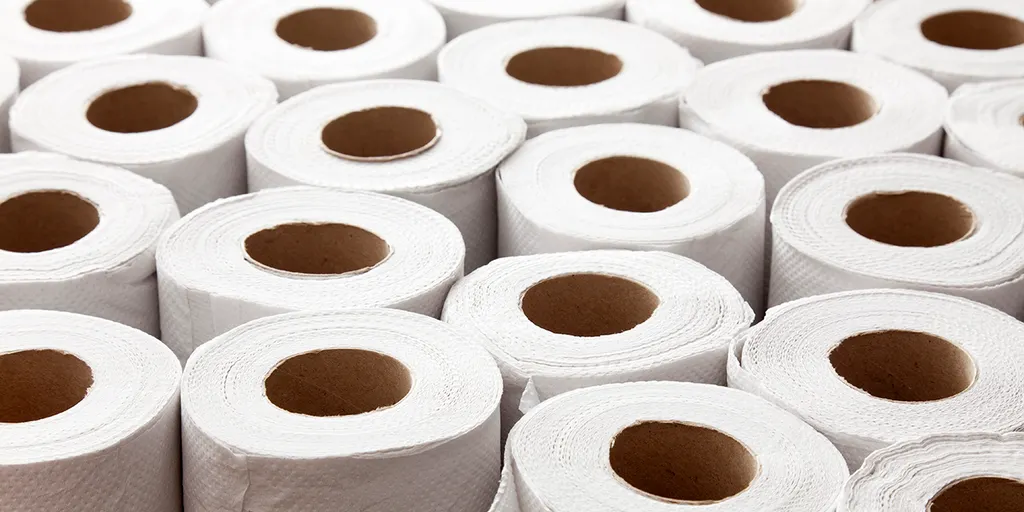 Top 10 Most Popular Brands of Toilet Paper in the United States Top 10 Most Popular Brands of Toilet Paper in the United States What are the most popular brands of toilet paper in the United States today! |
 Top 10 Best Toilet Papers in the UK Top 10 Best Toilet Papers in the UK Check out Top 10 Most Popular Brans of Toilet Paper in the UK Today! |
 How to UnClog A Toilet With Coca, Pepsi, Ice and Baking Soda How to UnClog A Toilet With Coca, Pepsi, Ice and Baking Soda A clogged toilet makes life in the family upset. Quickly deal with it right away with the tips below! |
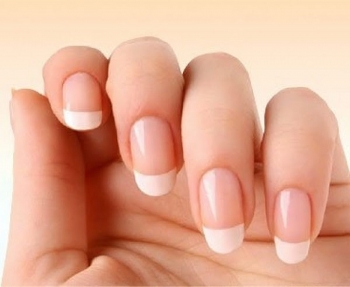 Top 7 Simple Tips to Clean Finger Nails Top 7 Simple Tips to Clean Finger Nails Nail care and keeping the fingernails clean not only looks healthier, it can also help prevent the transmission of diseases. |


























